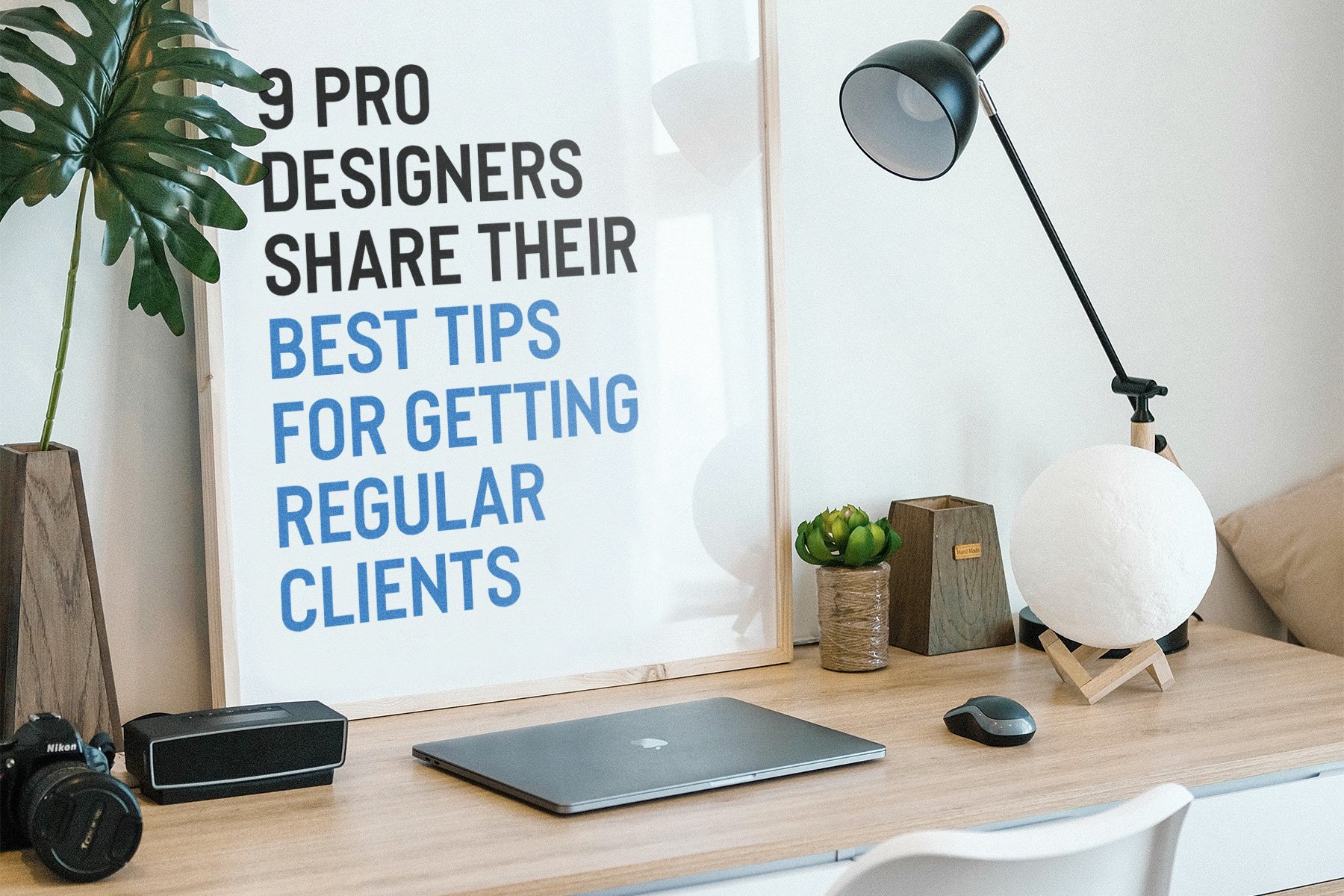Since the dawn of freelancing, designers around the world have struggled with something that, by now, is so cliché I can barely stand to mention it: the feast-famine cycle.
If you’ve ever tried to figure out how to get design clients on a regular basis, you know exactly what I’m talking about. For all the joy and excitement you feel when you finally book a new client project, there’s just as much dread when you finish the work and realize it’s time to start marketing your business again.
The cycle isn’t just frustrating, it’s exhausting. It can be disheartening and maddening.
How successful designers book themselves out for months
That’s why I’ve made a point to connect with and study designers who have “cracked the code” on getting frequent, regular clients. I’m talking about designers who, no matter what time of year and no matter what the economy looks like, seem to somehow have more than enough work.
Recently, I interviewed 9 designers who know what they’re doing when it comes to getting clients. What I learned was invaluable and I’m here to share some of my findings with you.
Look for ways to put client-finding on autopilot
While it’s not 100% passive income, getting new client leads on autopilot can feel completely magical. Imagine a scenario where, no matter where or what you’re working on, client leads continue to flood your inbox. It may sound like a dream, but I know designers who are turning it into a reality.
Ian Paget, the LogoGeek, gets way more requests every month than he can possibly take on. He explained that he’s “actively creating content in the form of blogs posts and podcast content, and finding ways to position [himself] as an industry leader [to generate] links back to [his] site.”
“My primary source of leads is from Google,” he explained to me. “When people need a logo, they search for ‘logo design’ or ‘logo designer’ and thankfully I’m lucky enough to be in the top results.”
My friend Matt Olpinski utilizes this same automatic marketing tool (SEO) for his web design business. “My website is 100% responsible for keeping my project calendar full,” he related. “Everything I do has one purpose: to help more clients find and contact me. Over time, that strategic effort paid off and now all of my projects are the result of organic website leads and I frequently turn down work for lack of availability.”
Designer Jill Anderson uses content marketing to drive up her client bookings too. “My #1 tip for booking clients months in advance is consistent content marketing. My newsletter keeps me in touch with clients and prospects. And the consistent blogging keeps me in Google’s good graces.”
Guarantee yourself word-of-mouth marketing
You’re just one person. That means that no matter how little sleep you think you can live on, you still only have a limited number of hours in a day. This is why you’ll need to rely on other ways of promoting your design business, rather than manually calling or emailing potential new clients.
Time and time again, freelancers I speak with say word-of-mouth marketing is their number one source of new clients.
“Do fantastic work,” is the advice I received from Patricia LaCroix. “Nothing has served me better over the past 30 years than word-of-mouth referrals. Give your clients a good reason to gush over your services and share what you do with the world.”
Designer Rebecca Blaesing shares a similar view: “Treat every client with respect, and be very responsive and clear in communication. At the end of every project, I want my clients to feel like I am truly invested in working with them. Happy clients return, and they become walking testimonials for me.”
Focus on finding repeat clients
One way to guarantee you’ll have work next month is to focus on finding clients now that will have repeat work later.
Brent Galloway is a t-shirt and merchandise designer who is sought after by some of the coolest names in the music scene. “My secret to keeping a booked schedule has been finding clients who are in constant need of designs,” Brent shared with me.
“I’m grateful and proud to now be in a position where I’ve worked with a handful of the same clients for over three years. And my client pool only continues to grow, because I defined what I wanted to be known for and who I wanted to work with.”
Designer-turned-coach Rhonda Page agrees, “One way to stop the feast or famine cycle is to create it so that clients keep coming back again and again and only want to work with you. How to do it? Start understanding more about their business and care as much about it as if it was your own business.”
Always plan for the future
Designer Ben Brush says his key to staying booked long into the future is to “keep a meticulous calendar of your work… By doing this, you are aware of holes in the schedule before you’re in them,” he added. “Knowing your availability down to the hour lets you maximize booking and stops you from turning down work you need later, just because you feel busy now.”
Instead of getting heads-down for too long on any project, keep your head up even when you’re busy, to assure you always have a full and complete pipeline of clients down the road.
How will you start booking more clients?
Regardless of what all of these pro designers say, there’s only one way you’re going to actually start booking out more clients into the future: You have to take action.
So I’m turning this onto you: which tactics shared in this post are you going to employ so your calendar of client work can start to fill up?
It’s time you say goodbye to the feast-famine cycle once and for all. Once you do, it’ll be incredibly exciting and liberating. I wish you the very best of luck!
—
This article was contributed by Preston Lee, the founder of Millo, where he and his team have been helping freelancers thrive for over a decade. If you’re ready to level-up your freelance business, subscribe to their newsletter for freelancers.






Be the first to comment